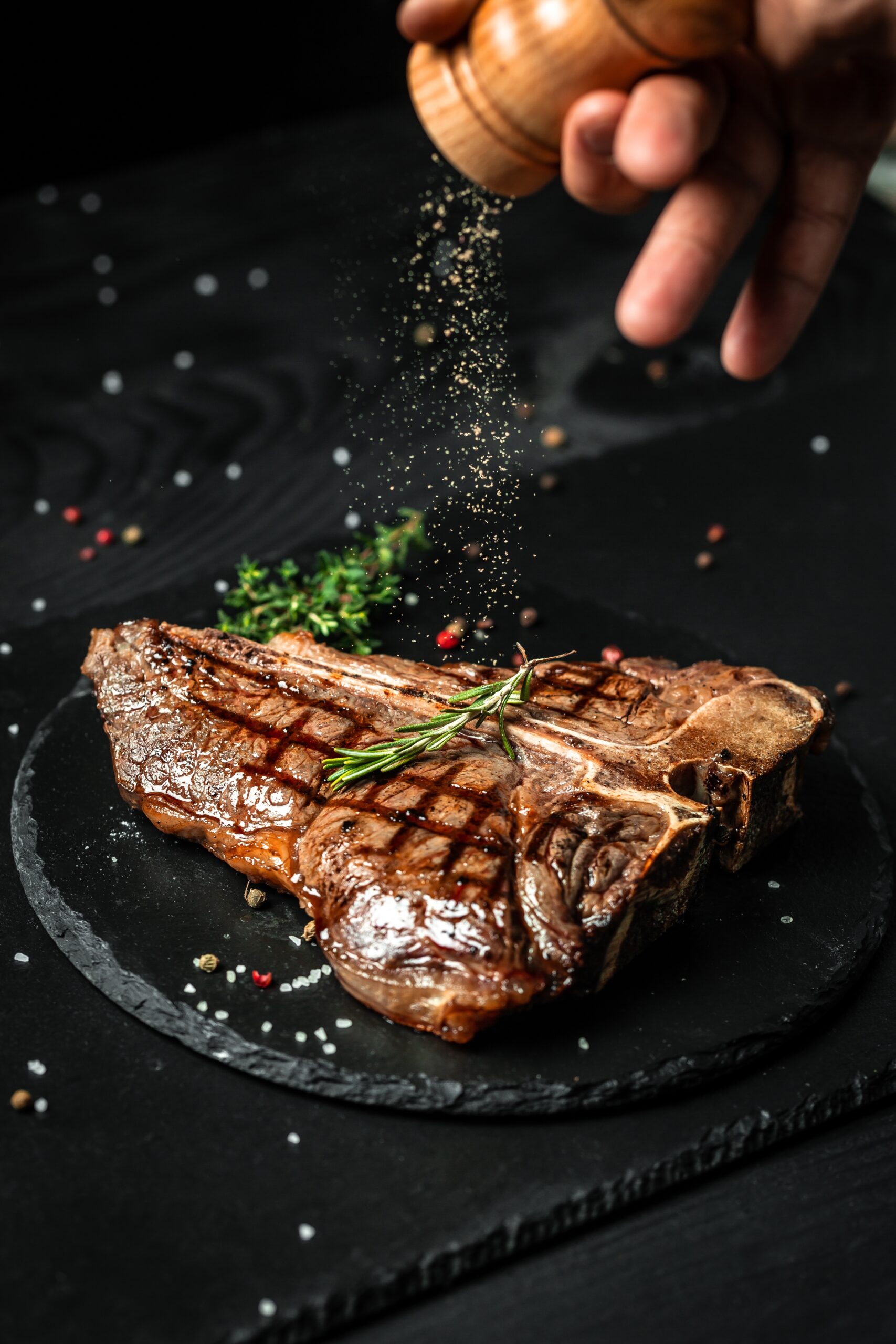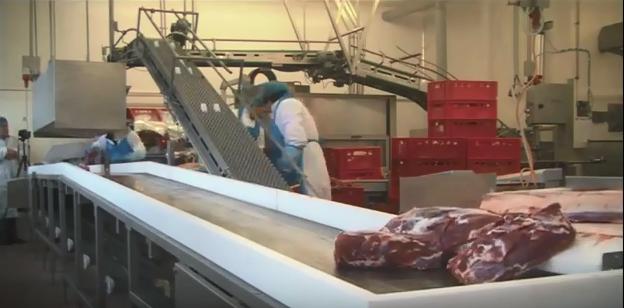
Your business is to process meat quickly, efficiently and cleanly, and for this you not only need skilled people but also the right equipment.
Our stainless steel conveyor belts – precision-engineered in Sweden and independently proven to be easier to clean than plastic – can help you to improve hygiene, cut costs, maximise uptime, reduce your impact on the environment and reap the benefit of an attractive return on investment.
Maximising hygiene standards
As a meat processor, you face the challenge of compliance with stringent legal regulations in terms of health, hygiene and safety, and this means maintaining best practices and taking every precaution to minimise bacterial build-up.
One of the most important pieces of equipment in this respect is the conveyor used to carry materials away from trimming or deboning lines. Research shows that by upgrading to solid stainless steel belts, your meat processing operation could significantly reduce the risk of bacterial build up.
We supplied and installed our first meat cutting tables with bone returning belts in 1955 and have the technical know-how and industry experience help you to:
- Improve hygiene standards in meat processing.
- Increase deboning/trimming plant availability.
- Dramatically reduce belt cleaning time.
- Cut consumption of water and cleaning agents.
By choosing stainless steel, you benefit from its inherent chemical and bacterial neutrality; it poses no threat to either human health or to the taste of food. Durability and corrosion resistance are important too; your stainless steel system should last for years, even decades.
Easy cleaning and sanitising for hygienic meat processing
The number one benefit for your business is its cleanability. Perfectly flat and smooth, a steel belt has no gaps, textures or hidden areas in which microbes could hide. This means you can:
- Clean and sanitize faster and restart meat processing sooner
- Benefit from high availability – important in multi-shift operations
- Reduce your environmental impact by cutting down consumption of water, detergents and chemicals.
Proven to reduce risk of bacterial build-up
Steel belts are extremely tough and resistant to damage and scratches, and this ensures that your processing line remains clean and hygienic throughout its working life.
This was confirmed by Finnish food laboratory VTT Expert Services Ltd. Their research team tested three types of belt – stainless steel (AISI 301), solid plastic and a plastic conveyor of slat construction – and concluded that risk of bacterial build-up could be reduced by upgrading to a stainless steel conveyor.
“Stainless steel is more cleanable than the two different plastic surfaces tested according to the culturing results. The difference is more significant for damaged surfaces.”
VTT Expert Services, Expert report
Cut chemical use
30%
Save up to 30% in water, detergents and chemicals compared with other belt types.
Cut cleaning time
60%
Get more productive hours – time savings of more than 60 % have been experienced.
- Steel belt for food processing and other hygiene critical processes
- Steel belts for conveying and processing
- IPCO World

